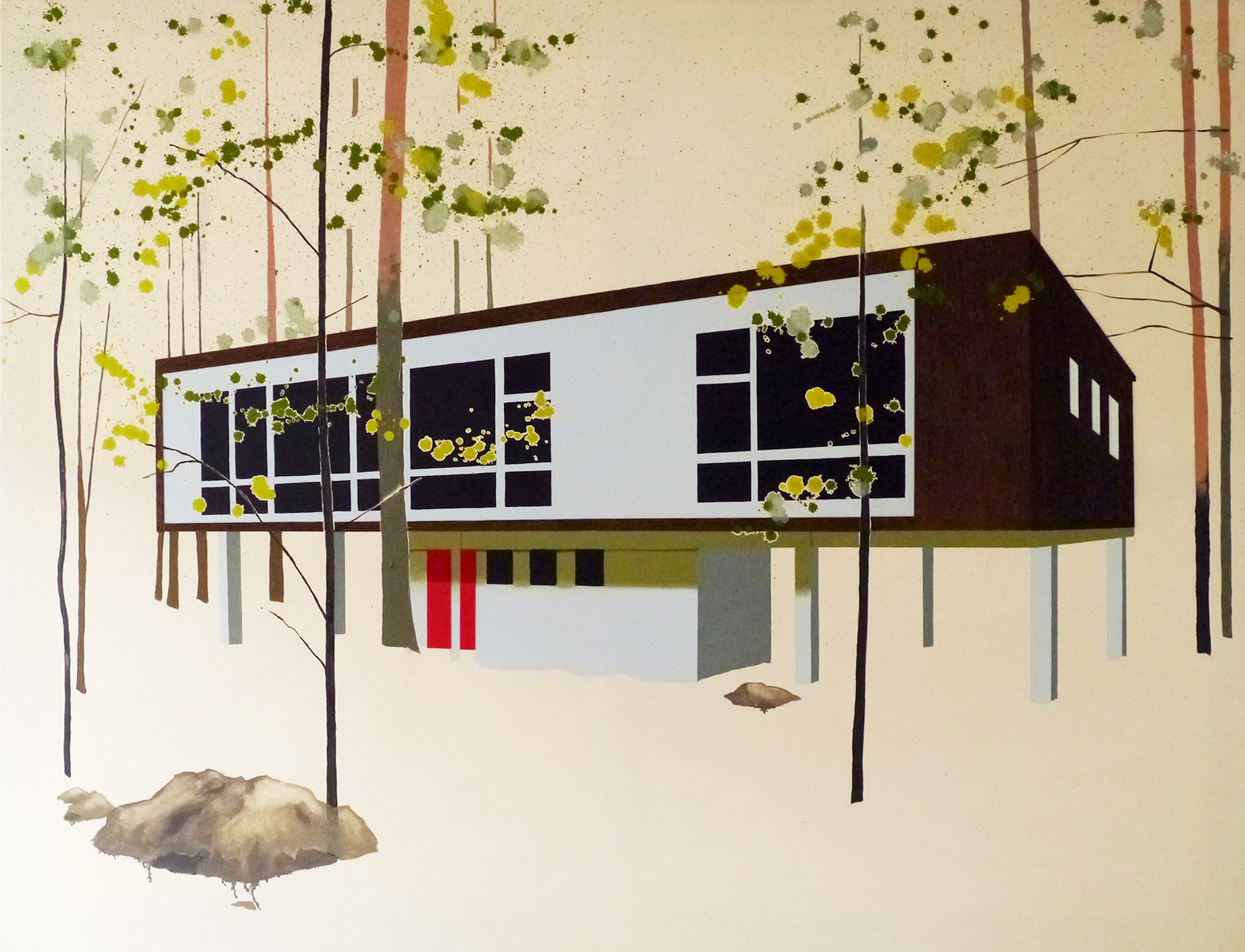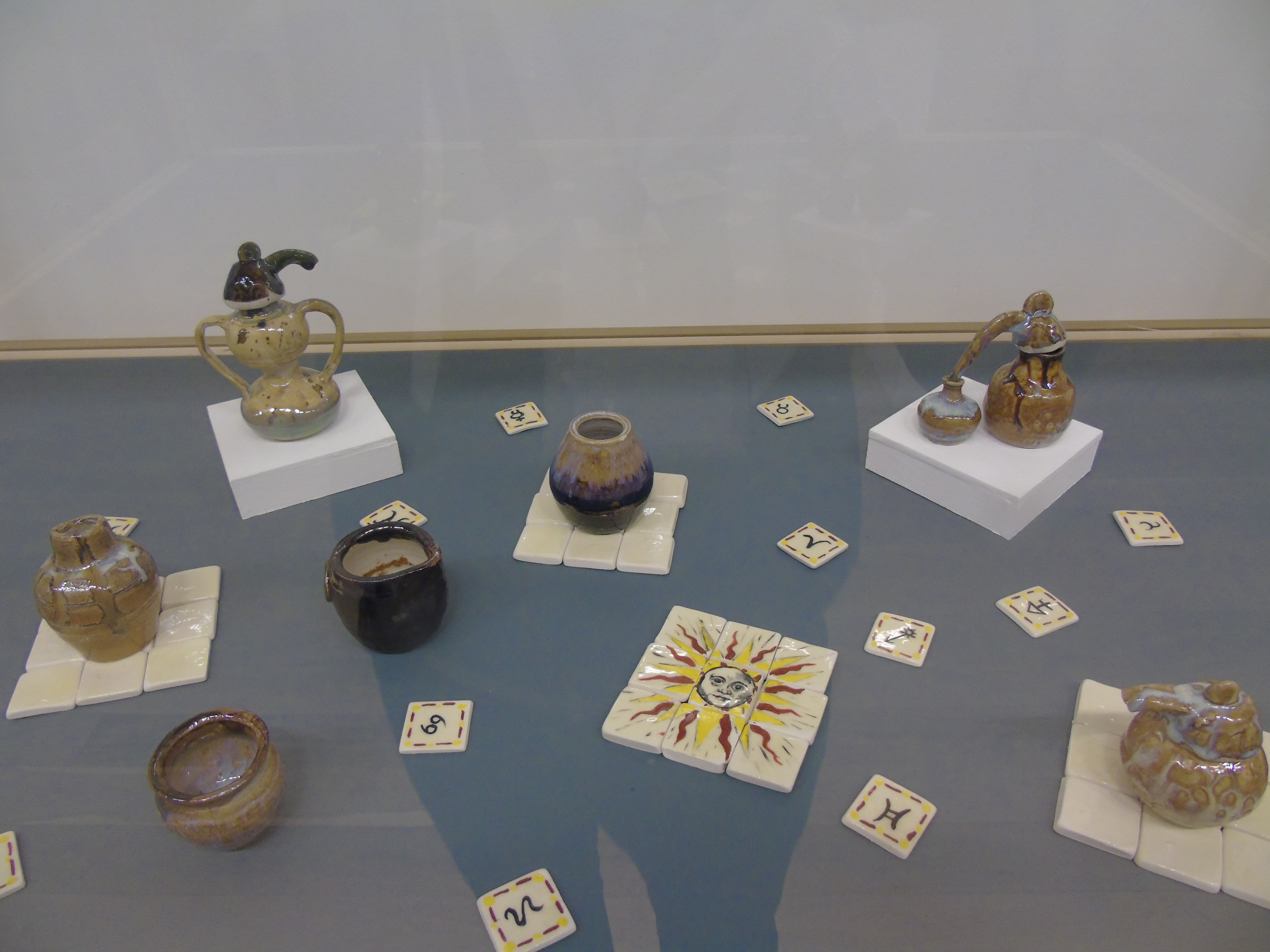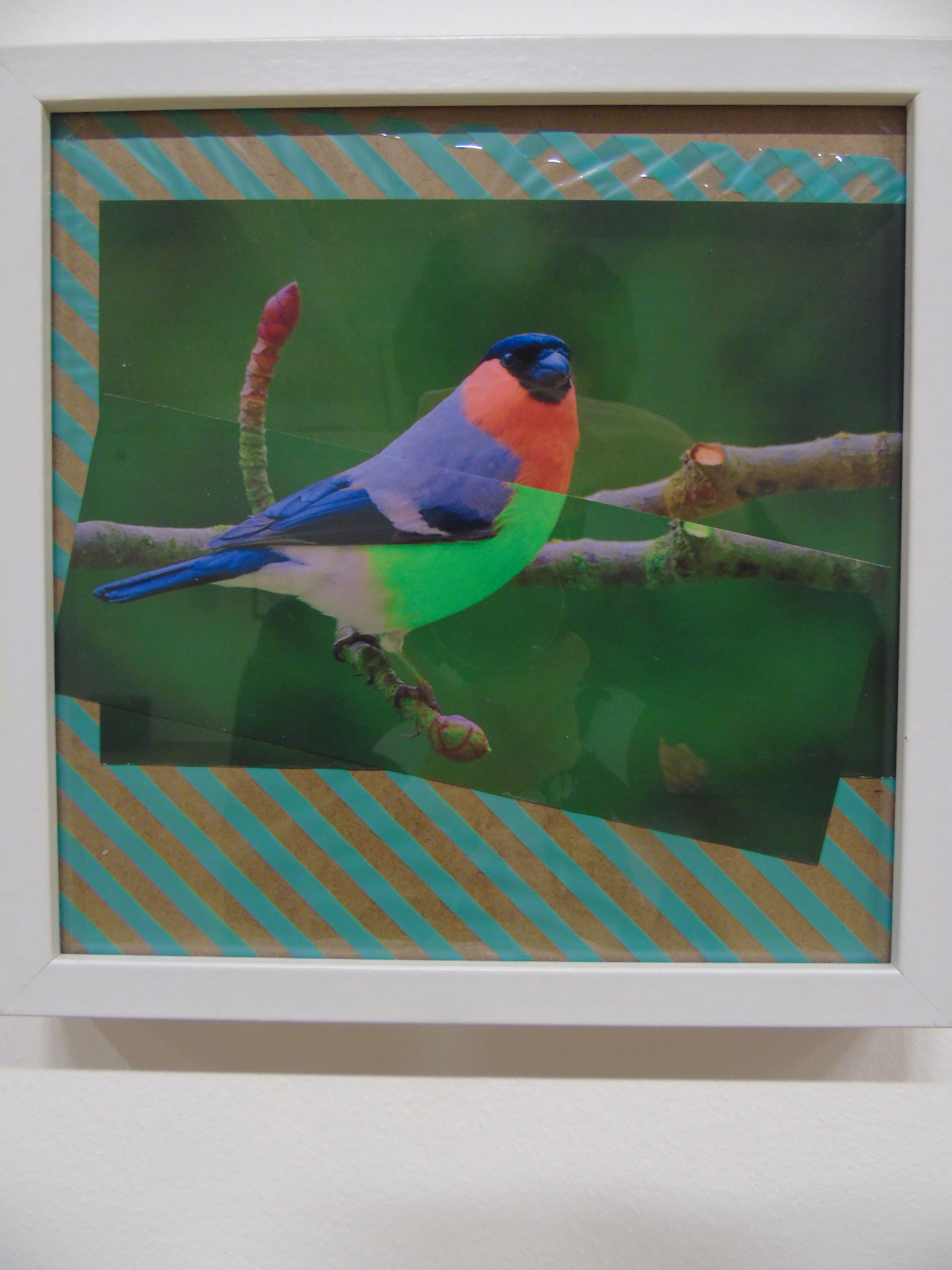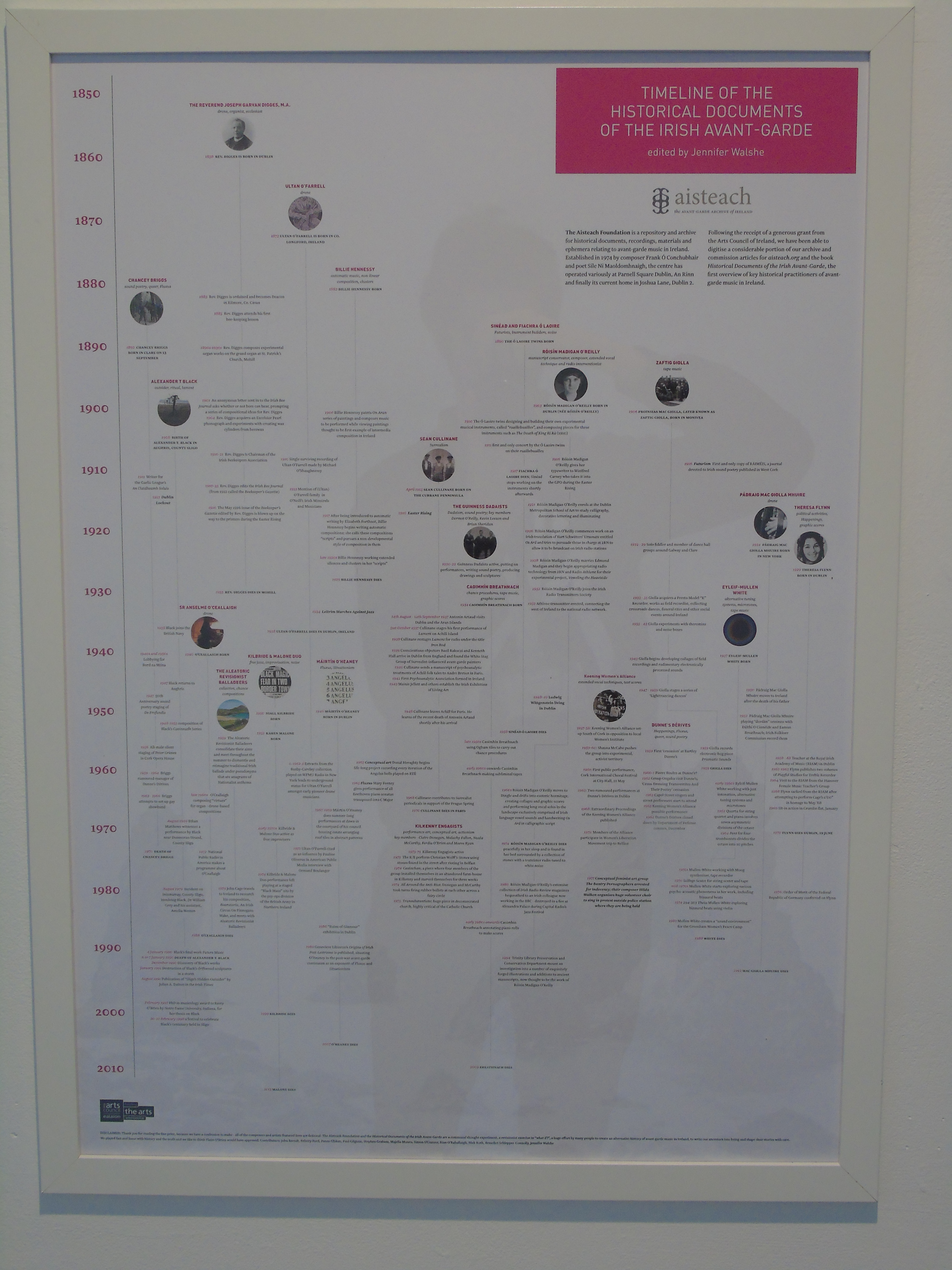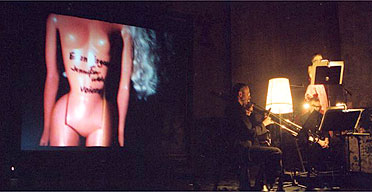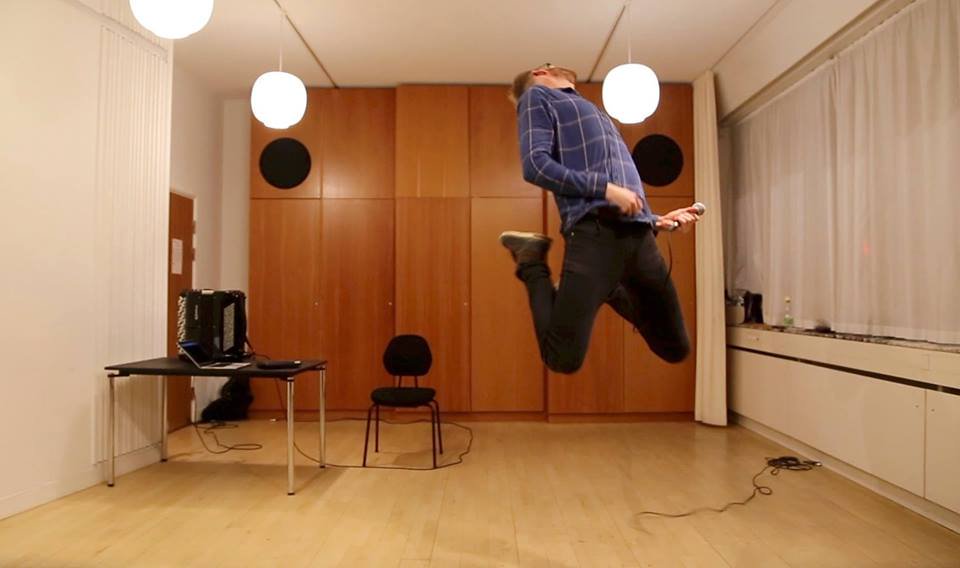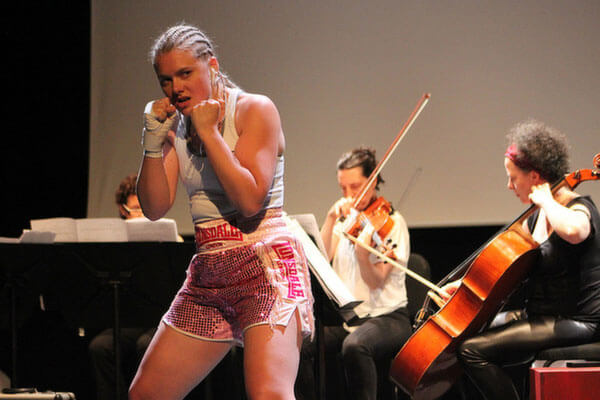
That project came out of the 100th anniversary of the 1916 Easter Rising. I first became aware of commemoration, pageantry and memorials during the events in and around the 50th anniversary of the Rising in 1966, when I was eight years old. That had a significant effect on my imagination. I was impacted by the coming together of so many people to mark what must have been a major historical event. It triggered my desire to draw out and colour the extraordinary stories that I was hearing. Our history school books were very well illustrated. When looking at history books I went from page to page seeking out the illustrations. Consequently, I was introduced to art and that combination of subjects has been a gift to me all my life.
Fast forward to when I was elected President of the Royal Hibernian Academy from 2014 to 2018; during my term as president, the centenary of the Rising was being commemorated. I had previously presented a series of three exhibitions covering the War of Independence and the Civil War – that period in Ireland from 1919 to 1923 – at the Kevin Kavanagh Gallery from 2010 to 2014. The director of the RHA Gallery, Patrick Murphy asked me if I would be interested in presenting a major exhibition of new work in 2016 to specifically mark the Academy’s contribution to the 1916 centenary commemorations.

The most significant cultural loss of the Rising was the complete destruction of the RHA as a time when it was hosting its annual exhibition. The Academy was then located on Abbey Street Lower, beside Wynn’s hotel in Dublin. It caught fire as a result of British shelling and that fire destroyed the entire exhibition – every painting and sculpture that went into the 1916 show. There were approximately 520 pieces. In addition to that, all the historic material – the paintings, sculptures, the library with its collection of rare and important books, documents and assorted artifacts, as well as the school – were lost in the inferno. The entire fabric and history of the Academy was gone.

As the president of the Academy I wanted to draw attention to this. The Academy’s destruction seems to have somehow escaped the full attention of historians and the public in general when referencing that period. My more immediate concern was how I would go about making that exhibition. I decided that I needed to create an installation that would harness the way I processed the events stretching back over the past 50 years in dreams. I opened up an hallucinogenic chamber using sculpture, painting and lighting to facilitate the efforts of both the public and myself to understand what this cultural loss had been about and what it could all possibly mean.
At primary school, we learned numerous songs including ‘The Foggy Dew’. The words of that song conjure up many vivid images that have been consistent in how they manifest themselves in my mind’s eye. The centrepiece of the song for me comes with the words, “While Brittania’s huns with their long-range guns sailed in through the foggy dew.” Officially, Brittania is always portrayed as benign, sitting down with her shield, her trident and lion beside her, benevolent. In ‘The Foggy Dew’, she’s vengeful – proactive in dispatching and dispersing her rebellious subjects. I was aware that the words of that song alluded to the HMY Helga – the gunboat that sailed up the River Liffey, anchored outside the Customs House and shelled Liberty Hall and the GPO. It was indirectly responsible for destroying the RHA when a barricade that was erected across Abbey Street Lower was set ablaze, igniting the Academy.
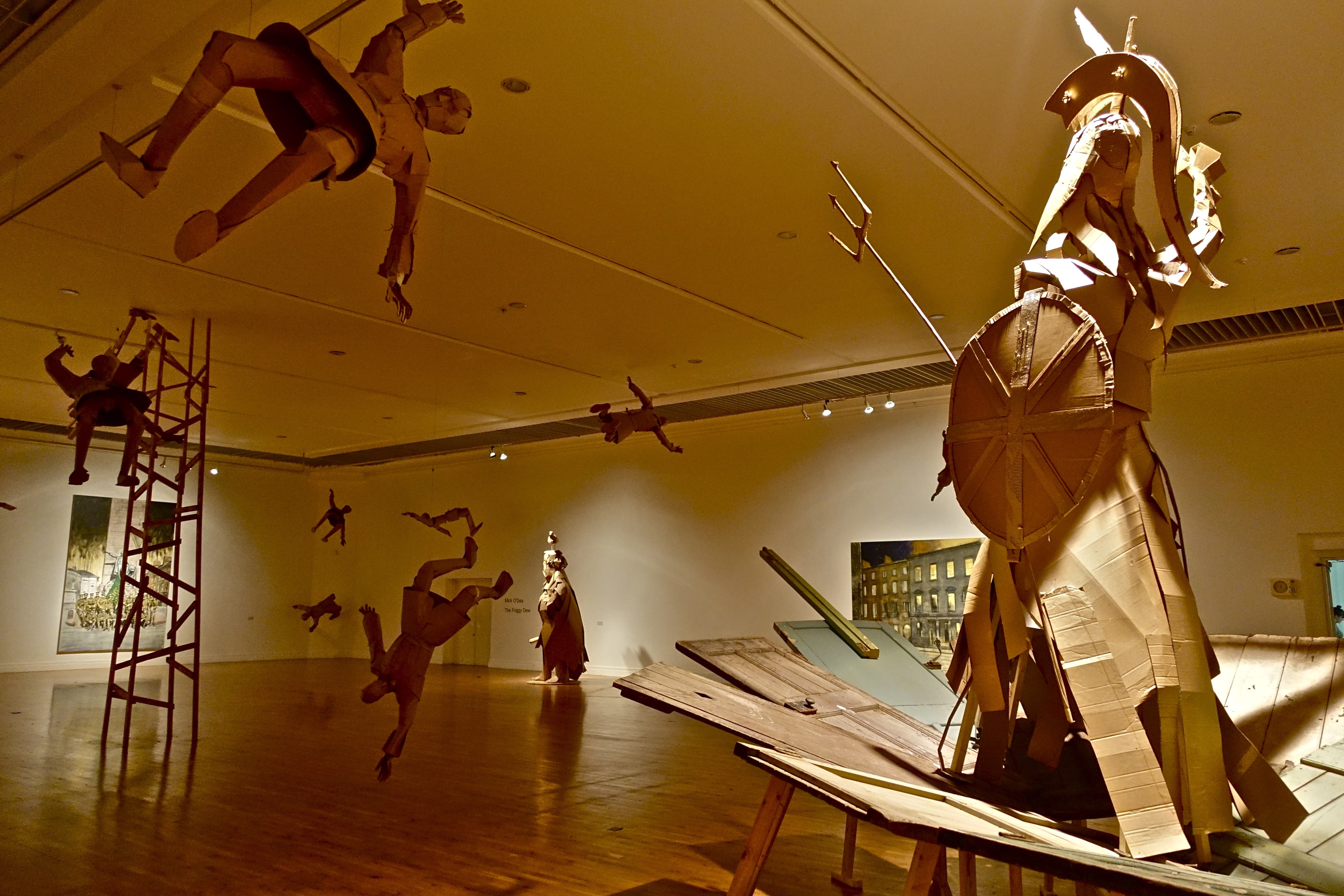
It came to me that the inspiration for the exhibition should be the geographical area that runs on a line from the Parnell Monument at the top of O’Connell Street to College Green and Trinity College. There one would have encountered the Parnell Monument, Nelson’s Pillar [destroyed by the IRA in 1966 and later replaced by the Dublin Spire], the GPO, the RHA on the left, the O’Connell Monument, Trinity College and the monument to William of Orange on College Green [removed in 1929]. They would all feature in the show. Downstairs, there was a block of 16 portraits of the 1916 leaders reinterpreted. Two wild card portraits were exhibited there as well: one of [W. H. M. Lowe’s son] John Loder and one of Captain Bowen-Colthurst.

The main gallery housed four 2.8 x 4 m paintings of the GPO on fire with a runaway horse, the Academy on fire, the Parnell monument with British soldiers and College Green with more soldiers. One for each of the four walls. The interior space was occupied by four large sculptures in wood and cardboard with a vengeful Brittania dominating. The other floor sculptures were of Daniel O’Connell with a large bird on his head, the remnants of Nelson tumbling from a very unstable plinth, and a version of the official monument unveiled in Ennis in 1966 to commemorate the Rising’s 50th anniversary. Suspended over all of these were 12 life sized figures entitled The Ever Present Dead, arms and legs askew as if they had been struck a mortal blow. They rotated gently in the air, dimly lit and fixed to a fine wire. The exhibition felt like the culmination of a recurring obsession that had never left me throughout my life. Here it was made manifest. I could not help but feel that I was the right person in the right place at the right time.
The sculptures in The Foggy Dew have a distinct monumental quality. Can you tell us more about that?

When I grew up in Ennis, I passed a monument that was erected to Daniel O’Connell every day on my way to and from school. I became conscious of plinths and public monuments in general, and discovered that whenever there is a dramatic regime change, the first things to come down are those monuments that are identified with the previous regime. They become charged focal points. The immediacy that I required when making the figures and objects could only come from cardboard. The initial maquettes were realised in my painting studio and then, with the help of the gallery crew, the wooden armatures were constructed in the basement of the Academy. Manipulating cardboard is like drawing with charcoal or painting; it’s very mobile and versatile. It accommodates changes in direction and emphasis whenever necessary.
I needed a physical environment that was all-enveloping and a sense of space and latitude that would evaporate boundaries. I was curious to see whether I could create an experience equatable with the images and sensations that generate and recede rapidly in my subconscious, in that state between sleeping and awakening.
Has sculpture always been a medium that interests you?
Yes. I started out at NCAD [The National College of Art and Design] in the sculpture department before transferring to painting. Throughout my time in painting I regularly made portraits and figure studies in the clay and plaster casting room on Kildare Street. I never cast the works; I preferred to keep them as clay constructions. As a consequence they don’t exist anymore, though I have some 35mm slides as evidence. I messed around with cardboard constructions for some time before being invited to take a studio with a group of South American and Spanish artists in El Poblenou, Barcelona between 1996 and 1997. I happened to be studying for an MA in European Fine Art at the time but the college studio was inadequate, though I held on to it as a base for generating ideas on a smaller scale. I was focused in a freewheeling way, letting the material I was working with map out my direction.

I spent several weeks constantly drawing before starting to paint. I then started to make structures out of scrap wood, string, rope, cardboard, etc., to use as source material and props for painting. The props in turn became sculptures and I lost the desire to record them as characters in paintings. They were autonomous objects in their own right. The subject matter was influenced by cinema and popular media, particularly Westerns, war films and the war comics that I consumed in my formative years. The cocktail of images that emerged was a development on the theme of the Plastic Warriors exhibition that I showed in the Rubicon Gallery, Dublin in 1995. It was concerned with violence, disruption and the potential for catastrophe to be unleashed on us at any moment.
My attitude to sculpture is that it is a natural extension of drawing and painting. My inspiration comes from practitioners like Picasso, de Kooning, Degas, Red Grooms, Rodin, etc. I construct and modify; I am not a carver by temperament.
Let’s talk about your painting. What drew you initially to portraiture?
I put my interest in portraiture down to the fact that I grew up above a public house and grocery shop in the middle of a densely populated, big-county town. I described the experience to someone once as akin to living in a corridor. There were people everywhere – customers downstairs as well as family and employees living above the business. We were closed for two days of the year: Good Friday and St Stephen’s Day. The rest of the time, the establishment opened around 8:30 am until midnight, except Sundays when the pub was supposed to be shut by 10:00 pm.
We attracted a varied clientele representing a healthy cross section of occupations from the town and country. We also had a loyal customer base that reappeared once or twice a year from England and the USA. We had our share of chancers and opportunists which gave the pub a bit of spice. The Clare Champion newspaper office lay directly across the very narrow street. Our pub was referred to as the “front office” because the typesetters and journalists held court there at all times of the day and night. The quality of discourse and debate was often very illuminating and I was exposed to facts and information delivered with eloquence and style. Arguments were tolerated except when they became personal or potentially violent – then my father and brother would step in, though my mother had a special gift when dealing with those situations.
That amount of exposure at a young age to personalities of all sorts and inclinations inculcated a deep curiosity in me about people. So it was natural that I wanted to draw them and attempt to understand and be around them. I wanted to learn and I was curious. Drawing and painting gave me proximity to explore people and personalities in greater depth. Through drawing, I could determine the extent of my understanding of them. I wanted to hear their voices and nail down an essence on paper or canvas before they left.
How did you go about finding your sitters?
For about the first ten years of my practice, the portraits I painted were almost exclusively of my friends and people I encountered in art school. I was intrigued by these new acquaintances and definitely needed to record them. I was also conscious that I was leaving a record of my time behind in paint and drawings. The works are intensely biographical. I lived in Dublin on and off since I moved there in 1976. My lifestyle was nomadic. I moved frequently and lived in many parts of the city, usually between the canals, northside and southside. I became familiar with the local art scene. Thom McGinty [alias The Dandelion Clown, later The Diceman] introduced me to many creative people from the world of performance.

I met Thom in NCAD. He symbolised what I was seeking: creative freedom and the unshackling of restraint as I conceived it at the time. I often found a place on the floor of Thom’s various lodgings when I was in transition from one place to another. He was very patient with me; he sat and posed for hundreds of drawings and paintings. As a mime artist who studied under Lindsay Kemp, he was able to be in the moment. When I would be rattling off about this or that, he would say to me, “Mick O’Dea, just be’’ in his drawl Glaswegian accent. My sitters were people who lived off their wits and talents. The 1970s and 80s in Dublin afforded people places to live. In my case it was the world of bedsits, flats and houses shared by some decent souls. Prospects were not great but there was wonderful spirit. That life was acted out in a city that was demolishing its architectural heritage and creating vast tracts of wasteland. The car was catered for at the expense of people. Actors, artist friends, friends of friends, head-the-balls, art models and people on the fringes were my subjects. The excitement of the encounter allowed me to transcend my capabilities and produce something even more exciting. The prospects were tantalising.
I was fortunate to exhibit my work in the Taylor Galleries during the 1980s. The gallery was exhibiting many of the artists in Ireland whose work I admired at that time. Through the gallery, I discovered a constituency that was interested in the type of portraits I was making and I received some interesting commissions. The Independent Artists annual exhibition also provided a forum for talented artists and I exhibited with them annually from 1981.

More recently I returned to working with actors, performers and musicians after accepting an invitation from the Director of the Kilkenny Arts Festival, Eugene Downes to be the artist in residence during the festivals of 2015, 2016 and 2017. It was a great opportunity. The festival has some extraordinary people performing there annually – exactly the kind of people I would wish to paint. For the first two years, I was accommodated with a studio in Stephens Barracks, the home of The Bloods, thanks to Lt Col Stephen Ryan and the Festival committee. We had some extraordinary moments with the sitters and the audience that attended. I painted someone every day. Sometimes I painted two portraits: one in the morning and one in the afternoon. The afternoon sessions were open to the public. The sitter recited poetry or communicated in whatever way they wished. That arrangement enabled me to harness the crowd’s energy and goodwill. They would respond to what I was doing while also engaging with the subject of the portrait. The atmosphere was like an open chat show. The painter was the presenter while the audience and subject were live participants. I was like a performer; I had to be match fit every day. For the final year I was hosted by The Home Rule Club, another fine venue. Through their support, I could concentrate exclusively on portraits. I did not choose the sitters. The Director persuaded the performers to give up their time to be scrutinised by the audience and myself. I don’t know if I would ever have the energy to repeat that kind of project again. It was unforgettable!
There’s an interesting quote of yours that seems to speak for a lot of your work: “History is never over. History is always present.” Can you unpack that?
As an artist, you have an ongoing dialogue with the practitioners of the past. This is not an academic engagement. Rather, it is a dialogue in the here and now. You are assisted by the masters as they reveal how, in their time, they have dealt with making art and understanding the world. The past achievements in so many areas of human endeavour are just stupendous; so are the mistakes. Our lived environment has been passed down or inflicted on us. We can’t escape our predecessors. We live with our dead. The longer one is around, the more constant their presence. Our actions are the consequence of what has preceded us. We are part of a continuum that stretches back through the ages. Our actions are a pulse that resonates on an infinite cord that emerges from the past and stretches into the future.
You can find out more about Mick O’Dea’s work through his website link below


